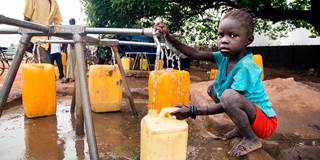The scientific and public-health communities must work urgently to deepen their understanding of the integrated challenges of conflict and climate change. The first step is a clear-eyed assessment of the current state of affairs, which will surely produce a harsh reality check regarding the resilience and effectiveness of existing solutions.
BOSTON – Yemen and South Sudan are, in many ways, worlds apart. But, despite vast differences in history, tradition, and culture, both countries share one painful feature: their people are now bearing the brunt of two of the most devastating manmade crises: violent conflict and climate change.
South Sudan has been mired in conflict for nearly a decade. In the last five years alone, tens of thousands have died, and nearly a quarter of the population has been displaced, with many having little choice but to flee to neighboring Kenya, Uganda, or Sudan.
Yemen, for its part, has emerged as a major front in the ongoing struggle for regional influence between Saudi Arabia, which has ties to Yemen’s government, and Iran, which supports the Houthi rebel group. In recent years, Saudi Arabia, in particular, has been carrying out devastating air strikes that have killed countless civilians and reduced Yemen’s infrastructure – including roads, schools, hospitals, apartment complexes, and markets – to rubble, leaving the country’s people without access to essential services. With water and sanitation facilities knocked out, the country is now facing the worst cholera outbreak in modern history.

BOSTON – Yemen and South Sudan are, in many ways, worlds apart. But, despite vast differences in history, tradition, and culture, both countries share one painful feature: their people are now bearing the brunt of two of the most devastating manmade crises: violent conflict and climate change.
South Sudan has been mired in conflict for nearly a decade. In the last five years alone, tens of thousands have died, and nearly a quarter of the population has been displaced, with many having little choice but to flee to neighboring Kenya, Uganda, or Sudan.
Yemen, for its part, has emerged as a major front in the ongoing struggle for regional influence between Saudi Arabia, which has ties to Yemen’s government, and Iran, which supports the Houthi rebel group. In recent years, Saudi Arabia, in particular, has been carrying out devastating air strikes that have killed countless civilians and reduced Yemen’s infrastructure – including roads, schools, hospitals, apartment complexes, and markets – to rubble, leaving the country’s people without access to essential services. With water and sanitation facilities knocked out, the country is now facing the worst cholera outbreak in modern history.